Black and White Desert Egypt is a national park established in 2002. It lies 570 km west of Cairo, approximately a 5-6 hour drive by car. Situated in the Farafra depression, it encompasses an area of 300 km2. The scenery found here appears otherworldly, shaped by sand and wind erosion. These unique conditions not only attract tourists. Also, geologists enjoy conducting research in this area.
Geology
The geology of the Black and White Desert Egypt features mostly rock formations composed of chalk and limestone layers dating back to the third period of the Mesozoic era. Originally situated on the bottom of ancient seas, these layers were exposed to the surface over time and shaped by erosion, creating the distinctive appearance of the rocks.
Calcium is the main mineral found in various formations. It gives them that pale white color that contrasts beautifully with the surrounding dunes. The White Desert is also home to many fossils, particularly those of ancient reptiles.
The region is characterized by sandstorms and winds that can last for several days. Comparable natural formations to the White Desert can be found in places such as Cappadocia in Turkey, Badlands in the USA, and Zhangye Danxia Landform in China. Besides the white rocks and surface, this desert hosts many endangered animals, including Rhim and Dorcas gazelles, desert foxes, jackals, and sand cats.
Bahariya Oasis
The journey into the Black and White Desert Egypt typically begins in Bahariya Oasis, reached after a long drive from Cairo with a possible stop at a gas station along the way. Bawiti, the main town of the oasis, offers a place to rest where you can enjoy a traditional meal in a Bedouin tent.
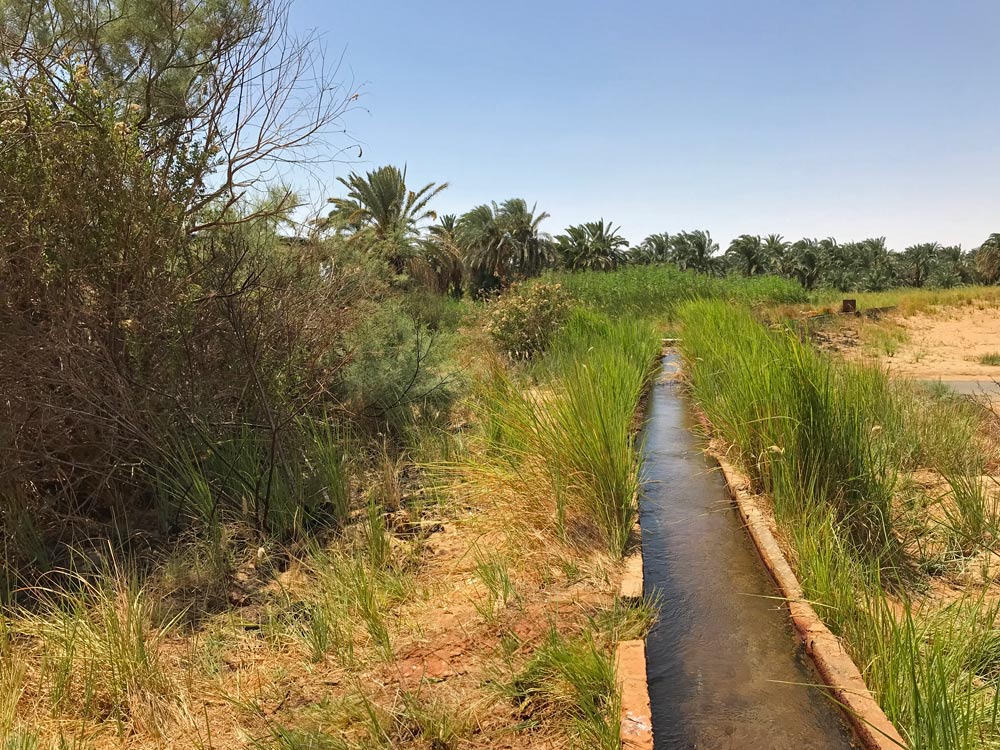
Black Desert
Next, the expedition ventures into the heart of the desert, entering through the Black Desert. Its black, hilly appearance results from past volcanic activity in the area. Most of its rocks contain iron sandstone. On its edges, volcanic hills bear the marks of dolerite eruptions from the second period of the Jurassic era. Dinosaur fossils were discovered here as well.
Since 2010, this region has been designated a national reserve. Gabal el Marsos (Divided Mountain) is the larger and more frequently visited hill, easily accessible by a short hike.
Continuing the journey, one can visit the settlement of El Haiz. Inhabited by Bedouins, many of whom originally came from Libya. Here, there is a thermal water spring, where you can enjoy a refreshing break.
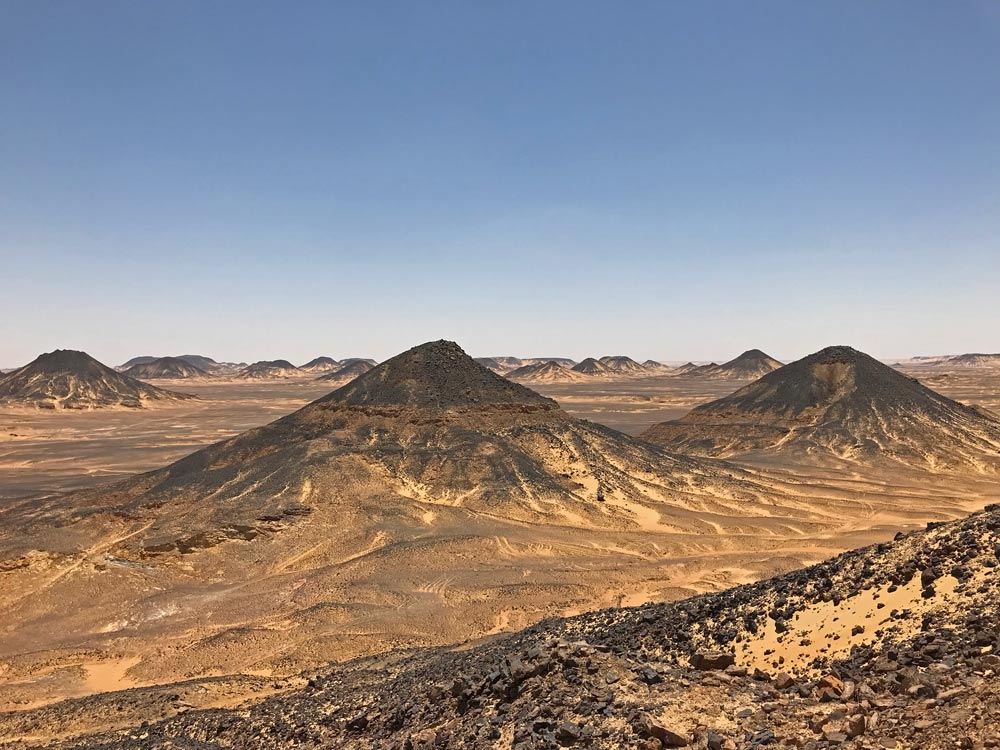
White Desert
The exploration of the White Desert usually begins at Crystal Mountain. An enchanting hill adorned with sparkling crystal formations. A result of ancient volcanic activity when minerals penetrated the rock millions of years ago.
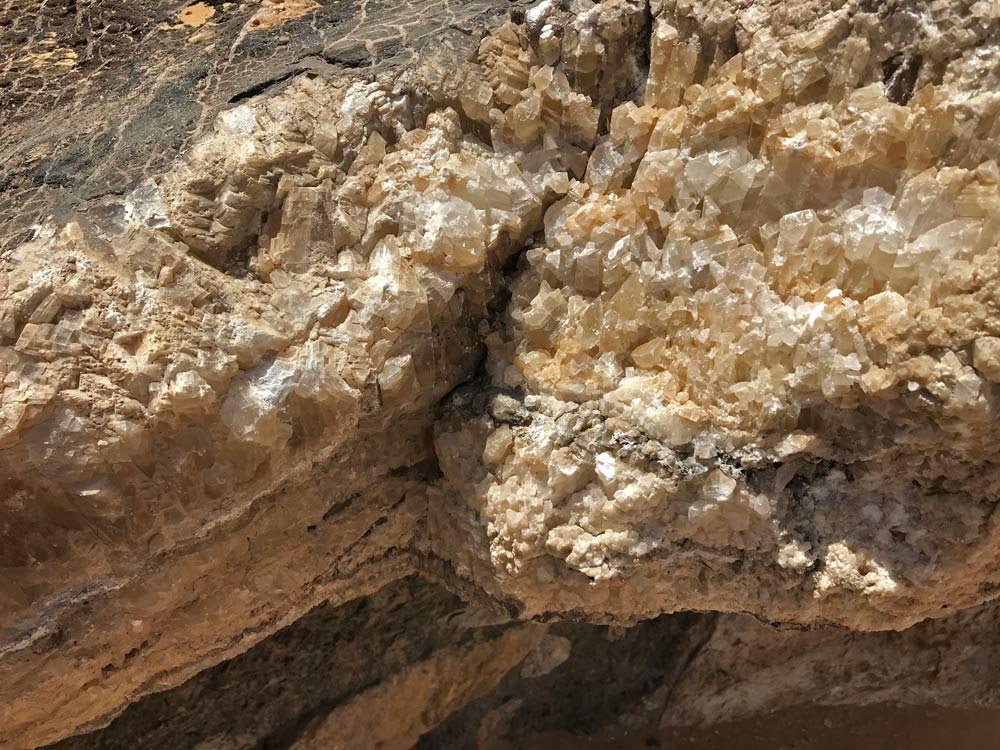
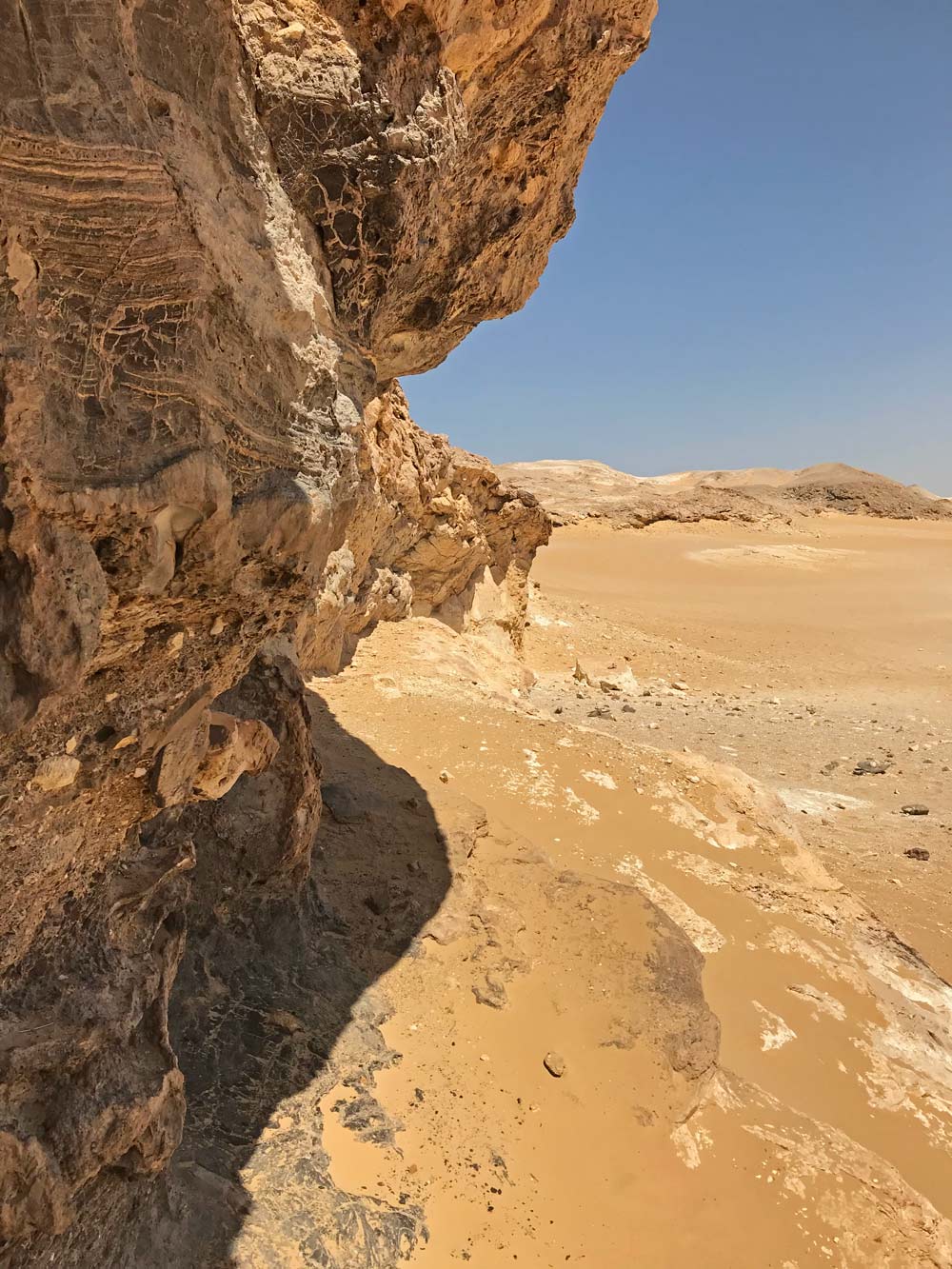
Another notable stop is Agabat el Sharkia, an awe-inspiring depression characterized by majestic white formations. Sculpted by wind and erosion over centuries, it offers a surreal and breathtaking view of the landscape. Its unique contours and tranquil atmosphere make it a captivating spot for nature enthusiasts and photographers.
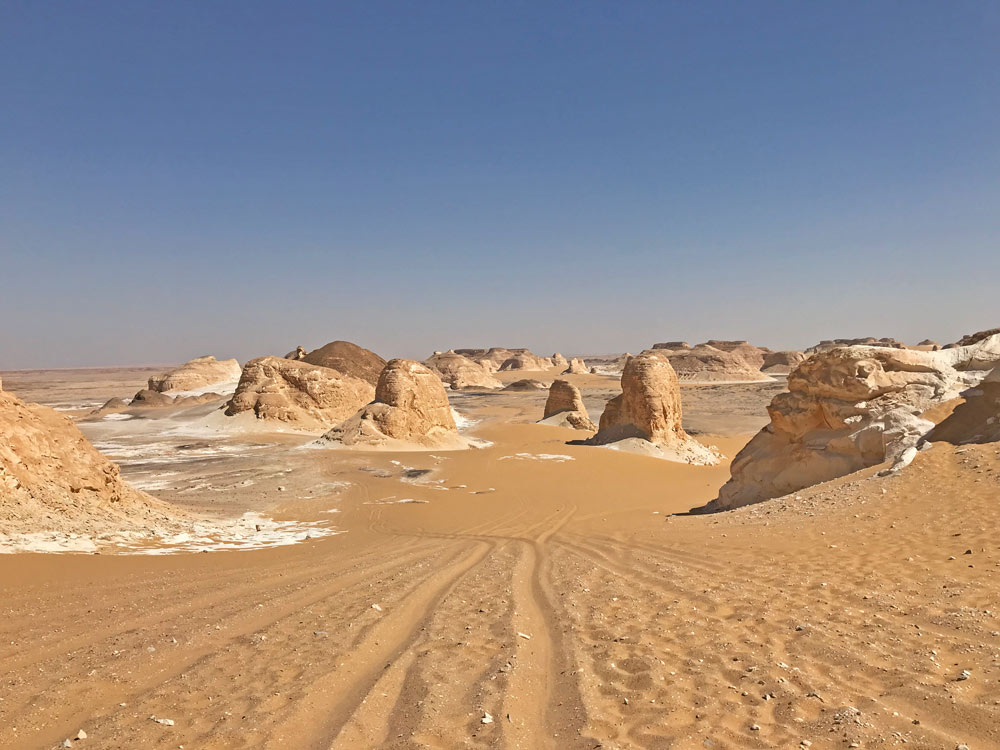
El Santa Tree, a fascinating natural wonder, stands as a lone acacia tree, defying time and inhospitable conditions. It proudly stands in the desert landscape, symbolizing resilience. Surviving for decades and providing a rare glimpse of life in this arid region.
In this desert wonderland, three more significant places stand out. First is the mesmerizing Mushroom Rock, a natural rock formation resembling a giant mushroom, sculpted by centuries of wind erosion. Nearby, the quirky Rabbit-shaped formation fascinates visitors with nature’s artistry.
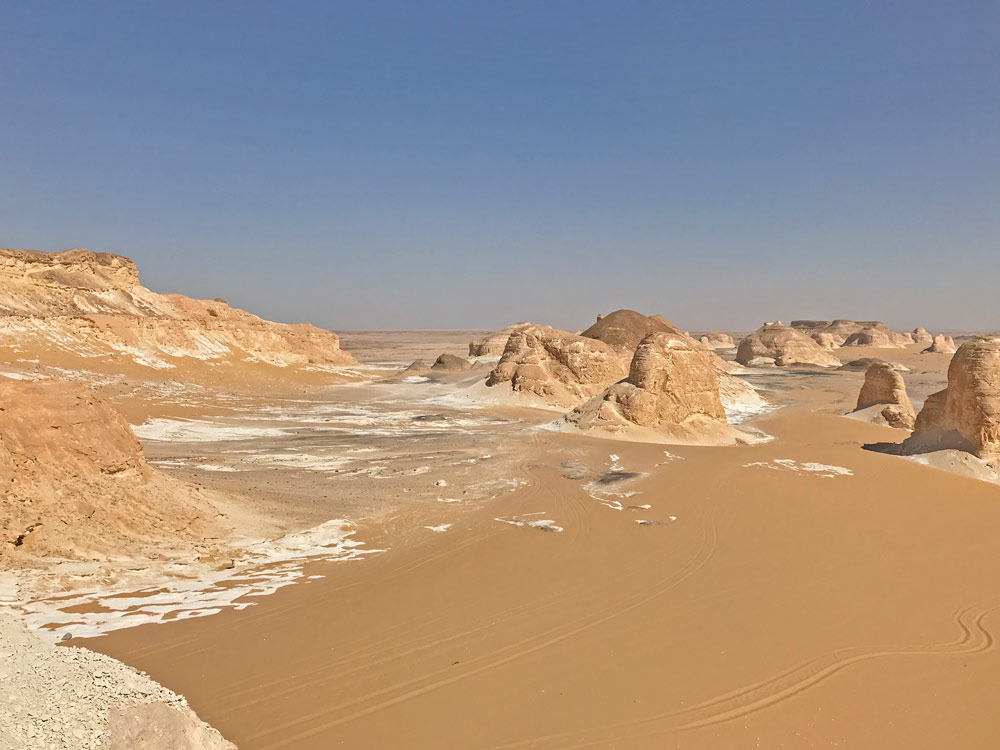
Deeper exploration of the desert reveals the stunning Inselbergs, isolated rocky hills rising majestically from the desert floor. These geological wonders add a touch of grandeur to the already magical scenery.
As travelers venture further into the White Desert, they encounter Wadi Hennis. It is a breathtaking valley carved into the landscape by water erosion. Its serenity and beauty create a sense of tranquility amidst the vastness of the desert.
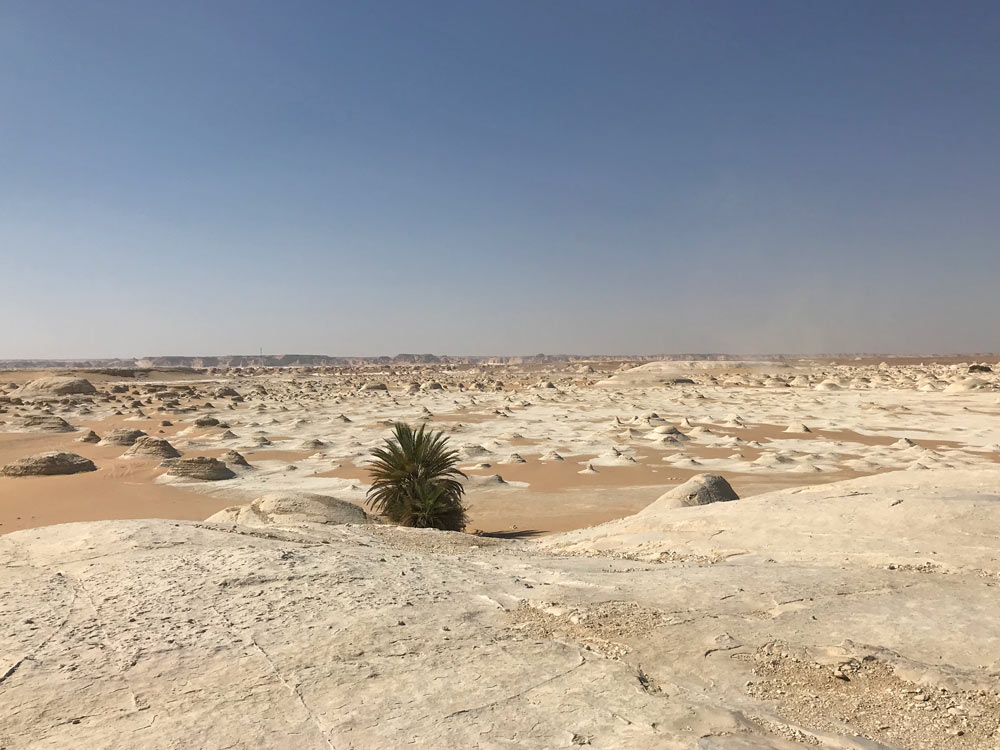
Two oases, Ain El Maqfi, and Ain El Wadi, are like precious jewels, offering relief from the arid surroundings. These lush green patches provide a stark contrast to the barren desert. Their life-giving waters support a diverse range of flora and fauna.
To explore this vast area thoroughly, it is best to spend here at least two to three days. And camp under the open sky. For those with limited time, you can see essential sights within 3-4 hours. Plus approximately 6 hours before and after when accessing the desert from Cairo. As the journey through the desert and highway lacks street lightning, it is advisable to return during daylight.
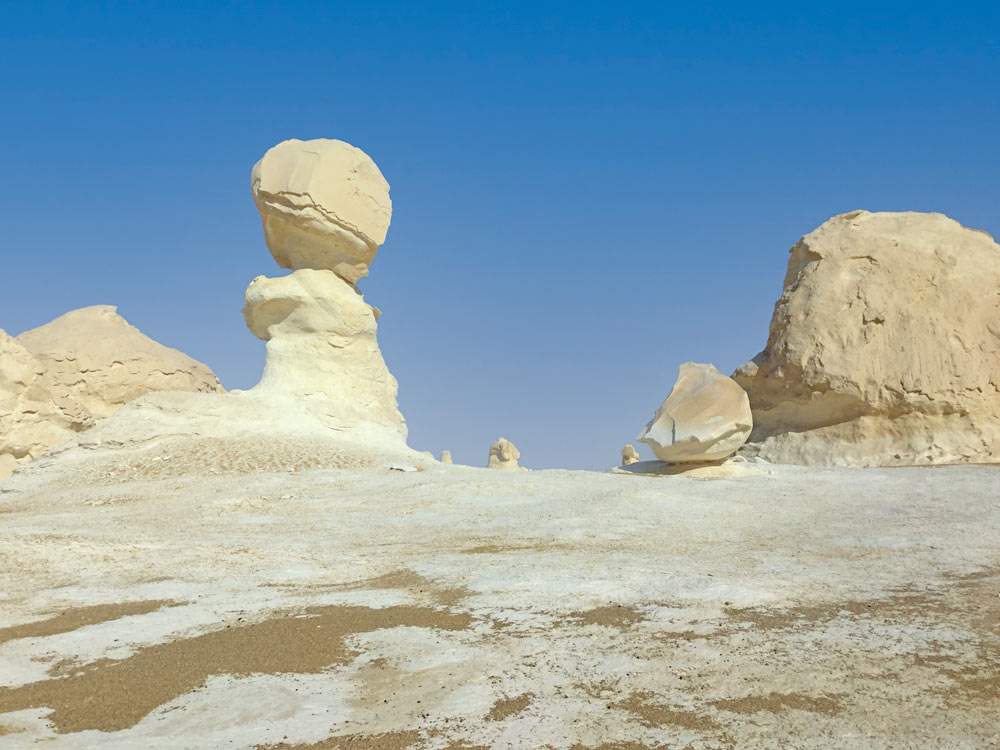
During the trip, one might notice scattered punctured tires, a common sight along the route. In the event of encountering such an issue (as happened to us – me and my guides), the overall stay in the desert may get longer. You might experience the sunset there and end up returning to Cairo in the late night hours.
Further west of the Black and White Desert Egypt lies the urban oasis of Siwa. Also known as the Amun-Ra Oasis, located approximately 50 km from the Libyan border. It is attractive for foreigners mostly for the ruins and remnants of the Temple of Amun, named after one of the significant Egyptian deities. Siwa is undoubtedly a place deserving attention and exploration.
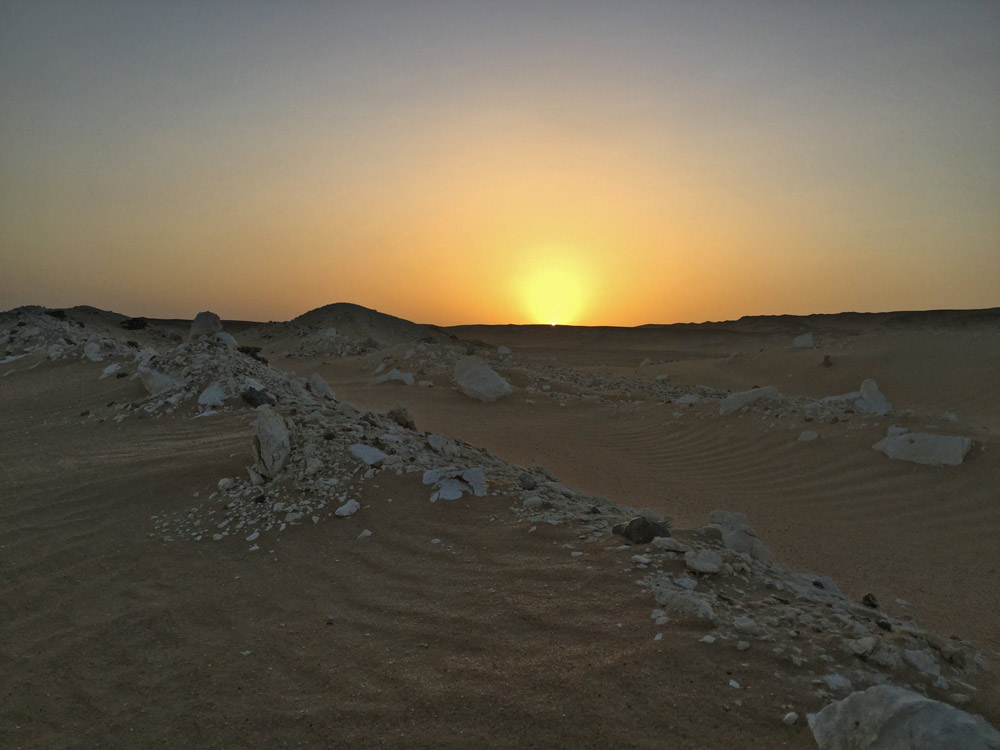
Sources:
en.wikipedia.org
geologyscience.com